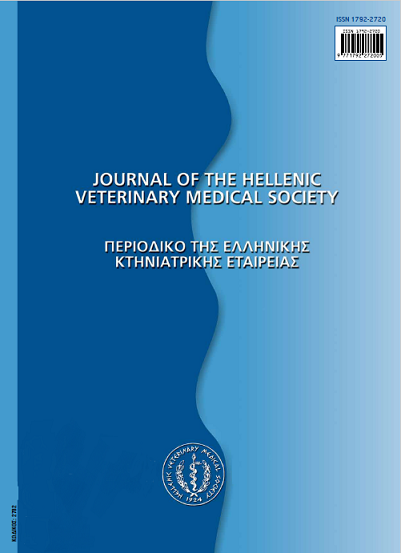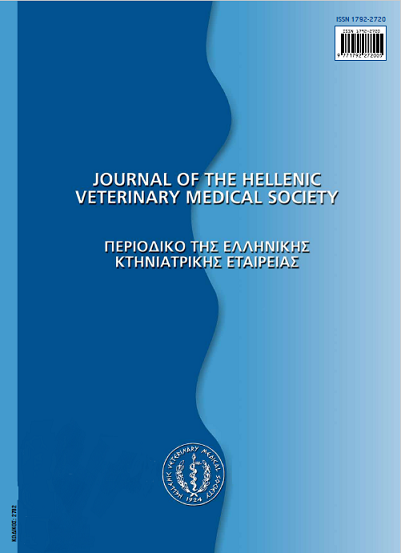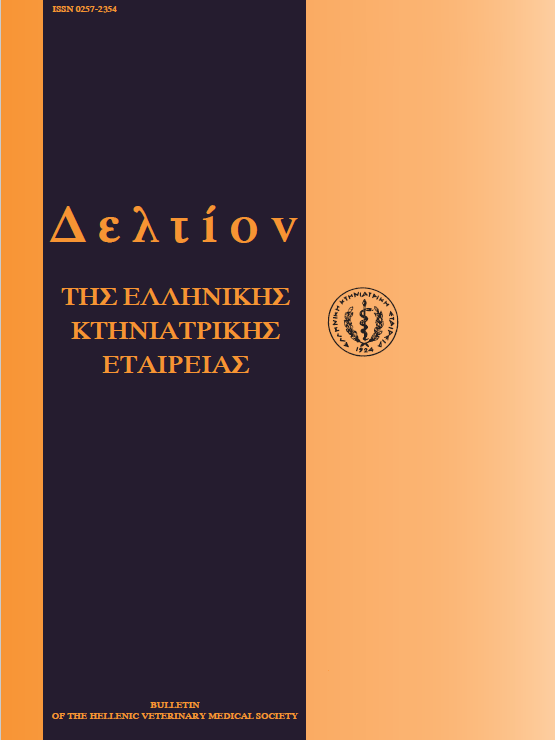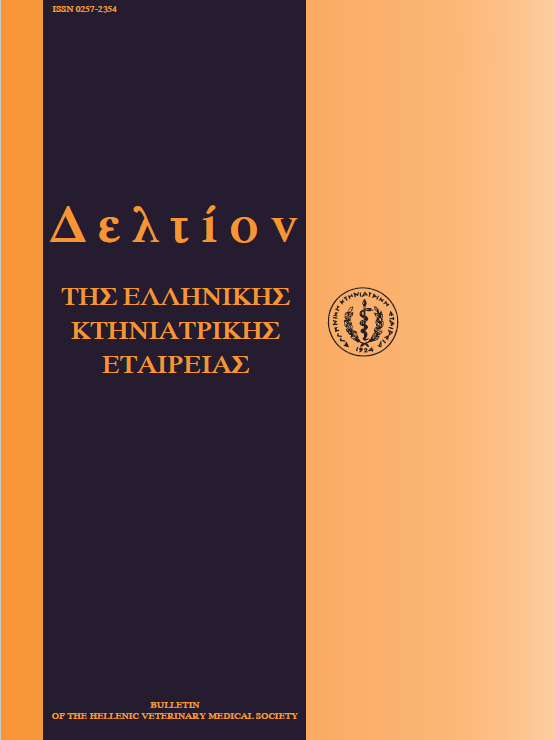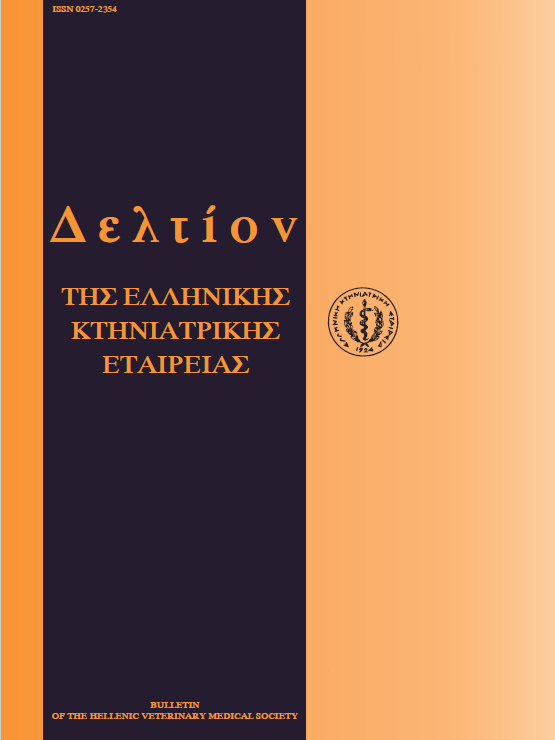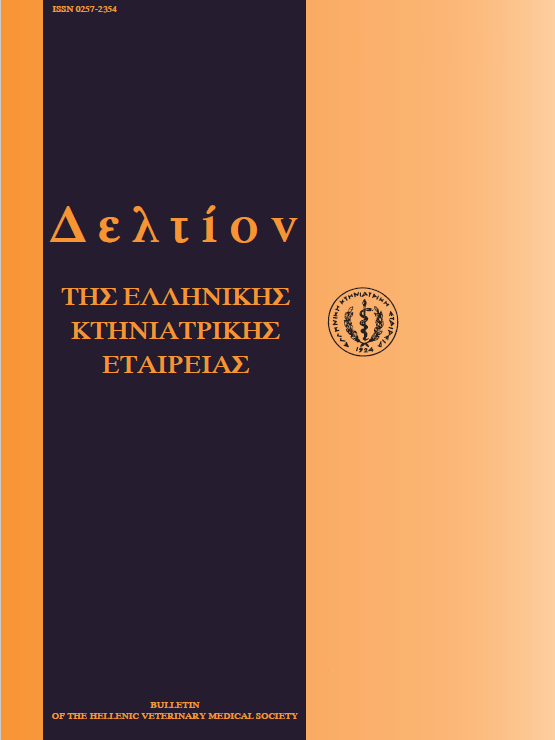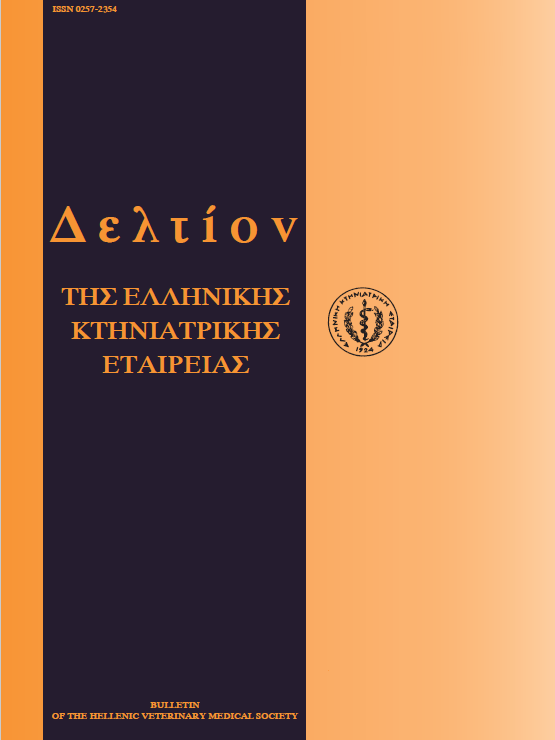Rabbit enteritis
Abstract
The incidence of the digestive system's pathological situations is particularly high in rabbits. Up to recently, several pathological situations of the digestive system of rabbits were described with various names as «non-specific enteritis», the cause of which, however, was not sufficiendy clarified. Over the last years, there has been noticeable progress in the clarification of the etiology of pathological situations of the digestive system of rabbits, which are characterized as enteritis. Generally, enteritis could be categorized, depending on the cause, in dietetic, bacterial, viral, parasitic and in enteritis of unknown cause, as well as due to the injudicious use of certain antibiotics, in enteritis from antibiotics. However, the simultaneous existence of more than one pathogenic factor creates diagnostic problems and differentiates the clinical "picture" each time, depending on the factors that participate. The most frequent dietetic enteritis of rabbits is mucoid enteropathy. The aetiology of the disease is not clear, but it is believed that isrelated with dietetic factors and changes of intestinal flora and pH. Among the parasitic enteritis the most common is coccidiosis caused by coccidia of Eimeria species. Enterotoxaimia, colibacillosis, dysentery and Tyzzer's disease are frequent bacterial enteritis. The aetiology of enterotoxaemia is the infection by Clostridium spiroforme, which produce a iota-toxin similar with the toxin of C perfrigens, type E. Colibacillosis of rabbits is caused by enteropathogenic strains of E. coli and is classified as colibacillosis of the newborn and nursing rabbits and colibacillosis of weaned rabbits. Dysentery has a multifactor aetiology. It is believed that many infectious factors (E. coli, C perfrigens, Cpiliformis, coccidia) and non-infectious factors (changes of the intestinal flora, dietetic factors, use of antibiotics per os) have a role in the occurrence of the disease. Tyzzer's disease occurs in many animal species, but is very important in rabbits and the causative agent of the disease is C pili forme. Regarding viral enteritis, so far there has been no clear proof that viruses play an aetiological role in the complex intestinal pathology of rabbits. However, there have been rotavirus, adenovirus, Coronavirus and parvovirus isolated from rabbits afflicted with diarrhoea. The occurrence of enteritis due to the improper use of certain antibiotics, which cause disturbance of the intestinal flora and simultaneously enteric pathogens increase (such as C spiroforme and C difficile) is also quite common. Enterocolitis is a new syndrome. Although the aetiology of this syndrome is not known yet, it is believed that a virus is involved. Apart from the various pathogenic microorganisms, the role of other non-contagious factors in the appearance of various forms of enteritis in rabbits is also important. Among these factors, the microclimate of the stable and the housing conditions of rabbits in general are significant. The housing of rabbits in low temperatures, particularly when it is combined with increased levels of humidity, leads to failure of their "defence mechanism" against various infections, allowing the installation and the immoderate spreading of pathogenicmicroorganisms in the intestine and of course, the demonstration of their pathogenic action. Also, the irrational and non-hygienic nutrition of rabbits causes changes in the composition of the normal microbial flora of the intestine, as well as the increase and spreading of pathogens. The simultaneous effect of these factors, during a disease intensifies the sickliness and mortality. From the cases that were treated in the Clinic of Productive Animal Medicine, of the School of Veterinary Medicine of the Aristotle University of Thessaloniki over the last 3 years, it is obvious that enteritis of rabbits constitutes the most important problem in the intensive Greek rabitries. The diseases that often appeared are also coccidiosis, the mucoid enteropathy, as well as in smaller percentage the Tyzzer's disease. The objective of the present paper is the enrichment of the relatively limited Greek bibliography with information regarding enteritis of rabbits, which will be useful to the veterinarian who deals with rabbits as productive animals or as laboratory animals or as pet animals.
Article Details
- How to Cite
-
TZIKA (Ε. Δ. ΤΖΗΚΑ) E. D., & SAOULIDIS (Κ. ΣΑΟΥΛΙΔΗΣ) K. (2017). Rabbit enteritis. Journal of the Hellenic Veterinary Medical Society, 55(2), 145–155. https://doi.org/10.12681/jhvms.15183
- Issue
- Vol. 55 No. 2 (2004)
- Section
- Review Articles
Authors who publish with this journal agree to the following terms:
· Authors retain copyright and grant the journal right of first publication with the work simultaneously licensed under a Creative Commons Attribution Non-Commercial License that allows others to share the work with an acknowledgement of the work's authorship and initial publication in this journal.
· Authors are able to enter into separate, additional contractual arrangements for the non-exclusive distribution of the journal's published version of the work (e.g. post it to an institutional repository or publish it in a book), with an acknowledgement of its initial publication in this journal.
· Authors are permitted and encouraged to post their work online (preferably in institutional repositories or on their website) prior to and during the submission process, as it can lead to productive exchanges, as well as earlier and greater citation of published work.

